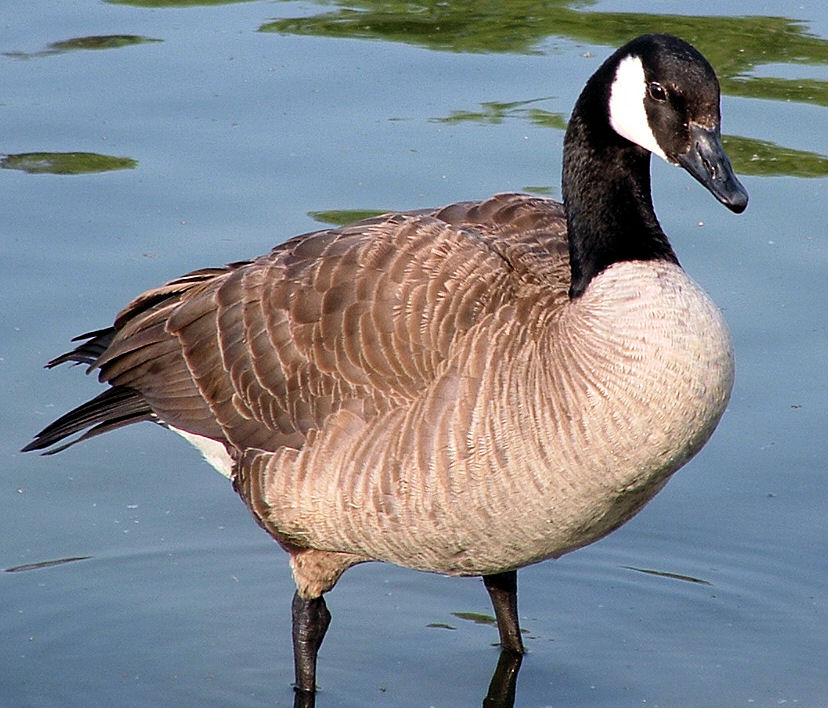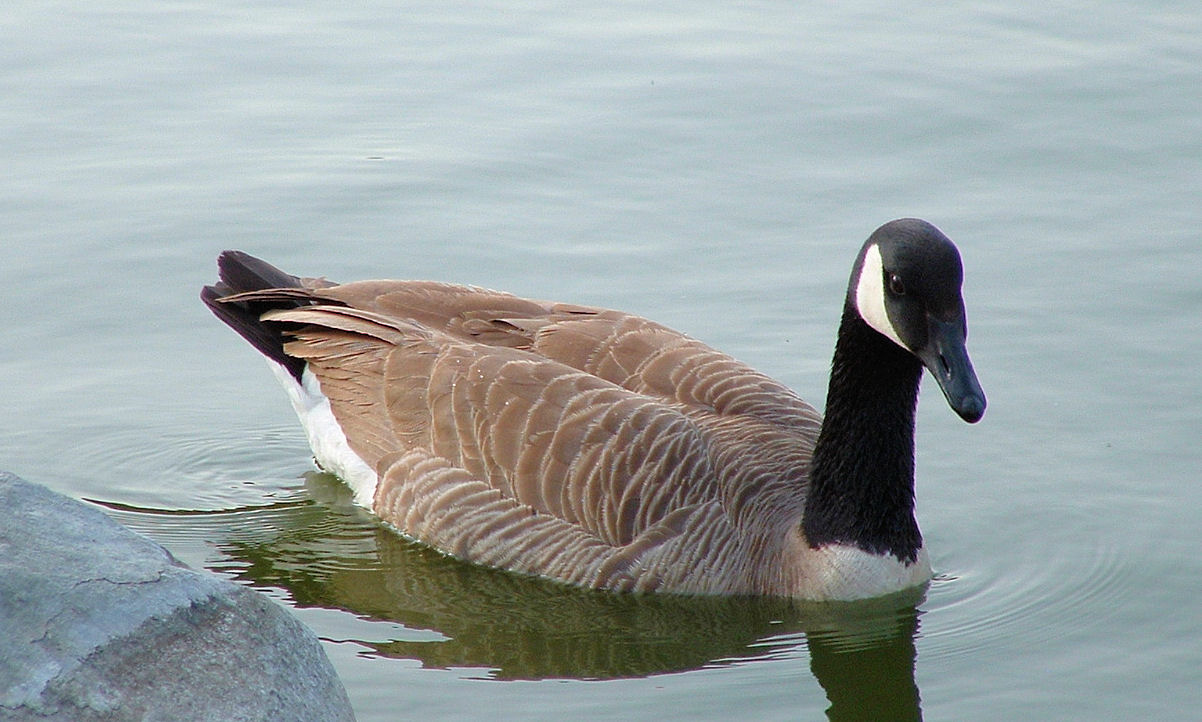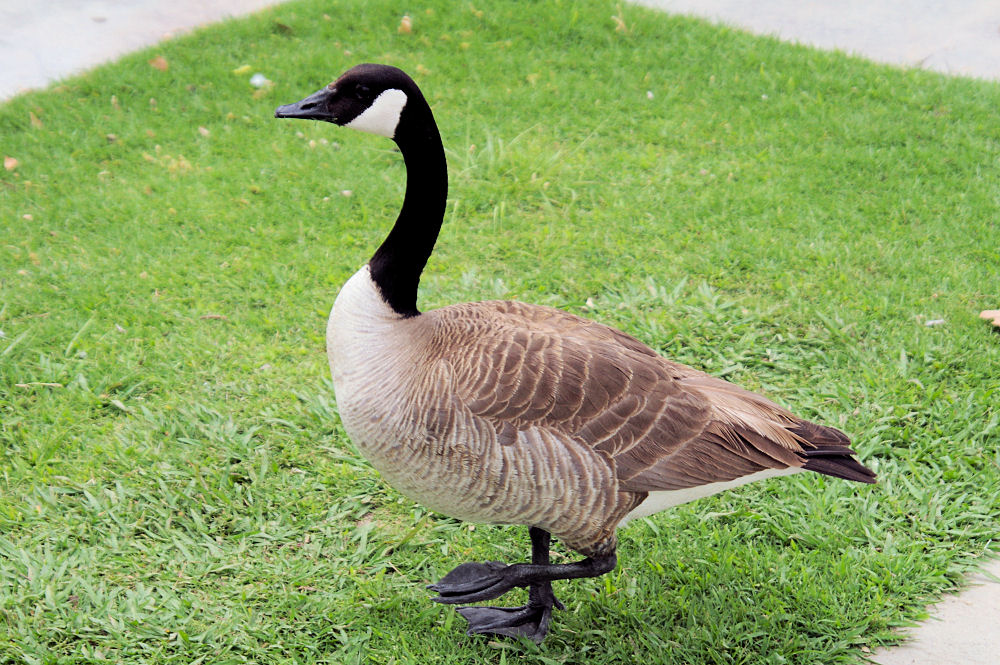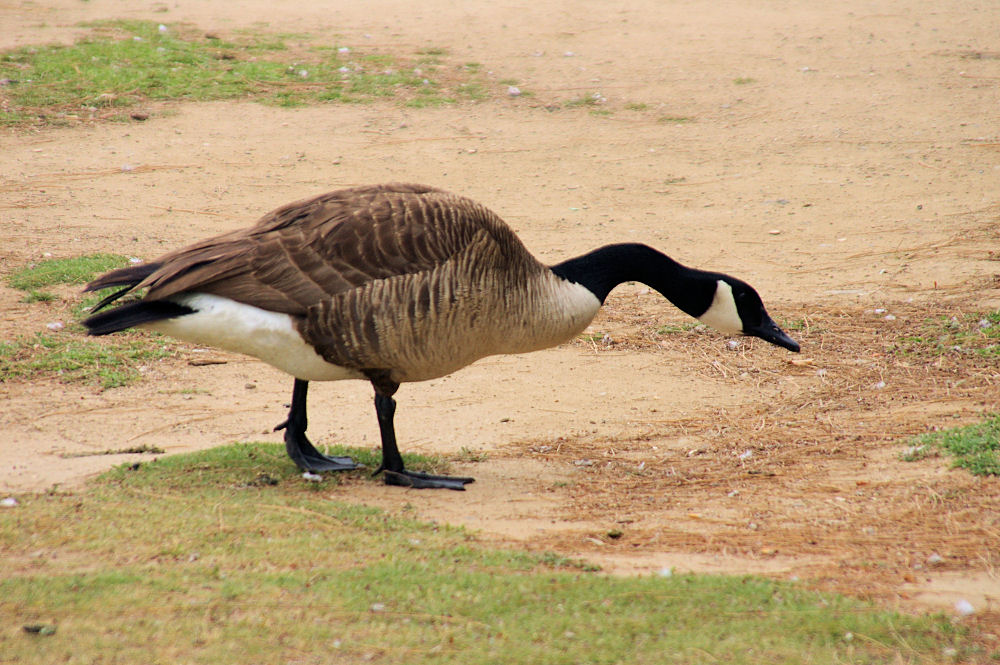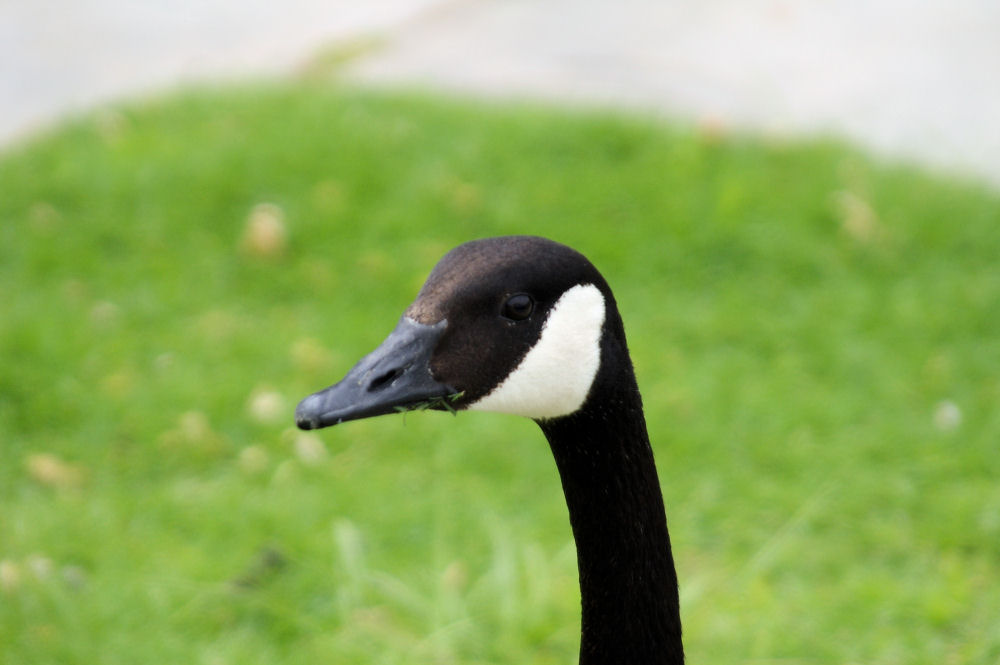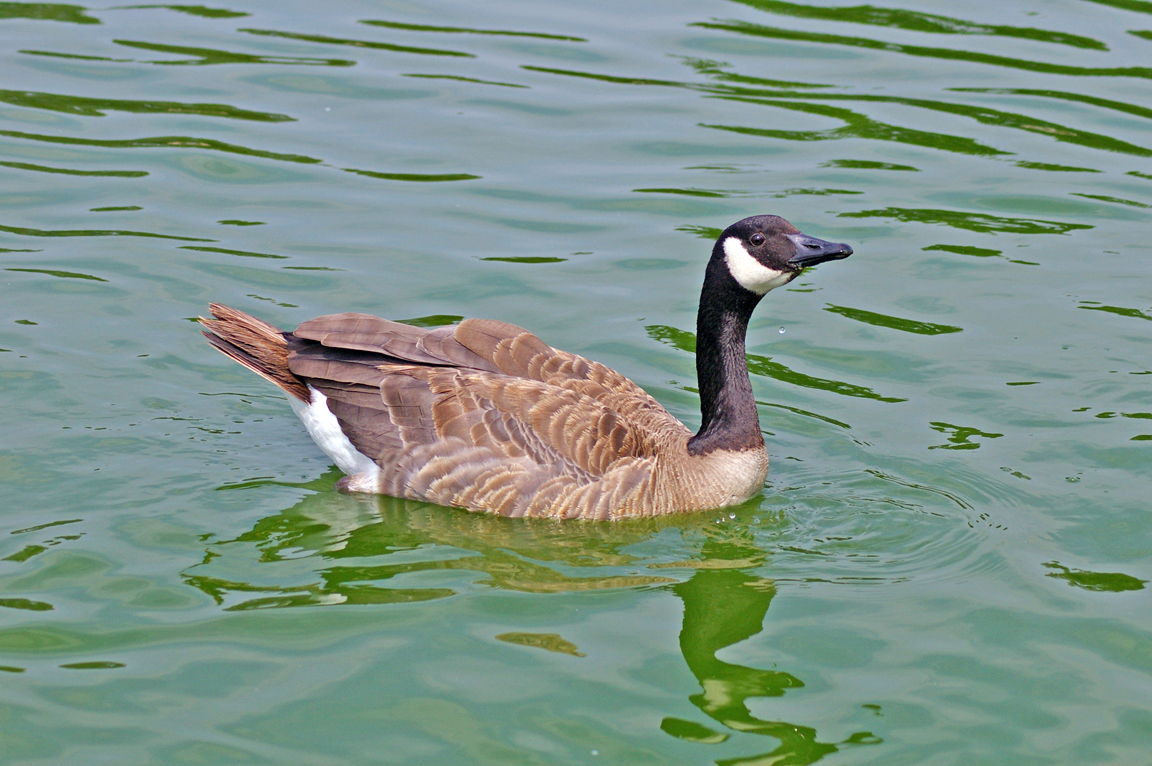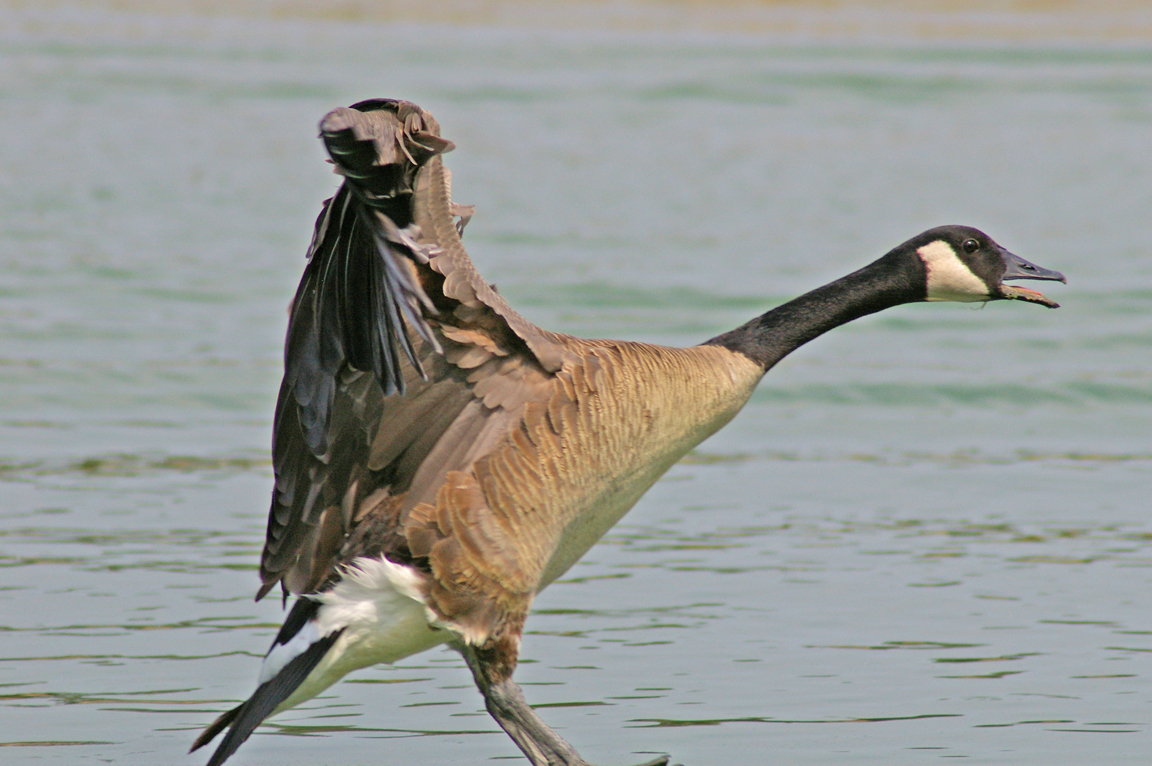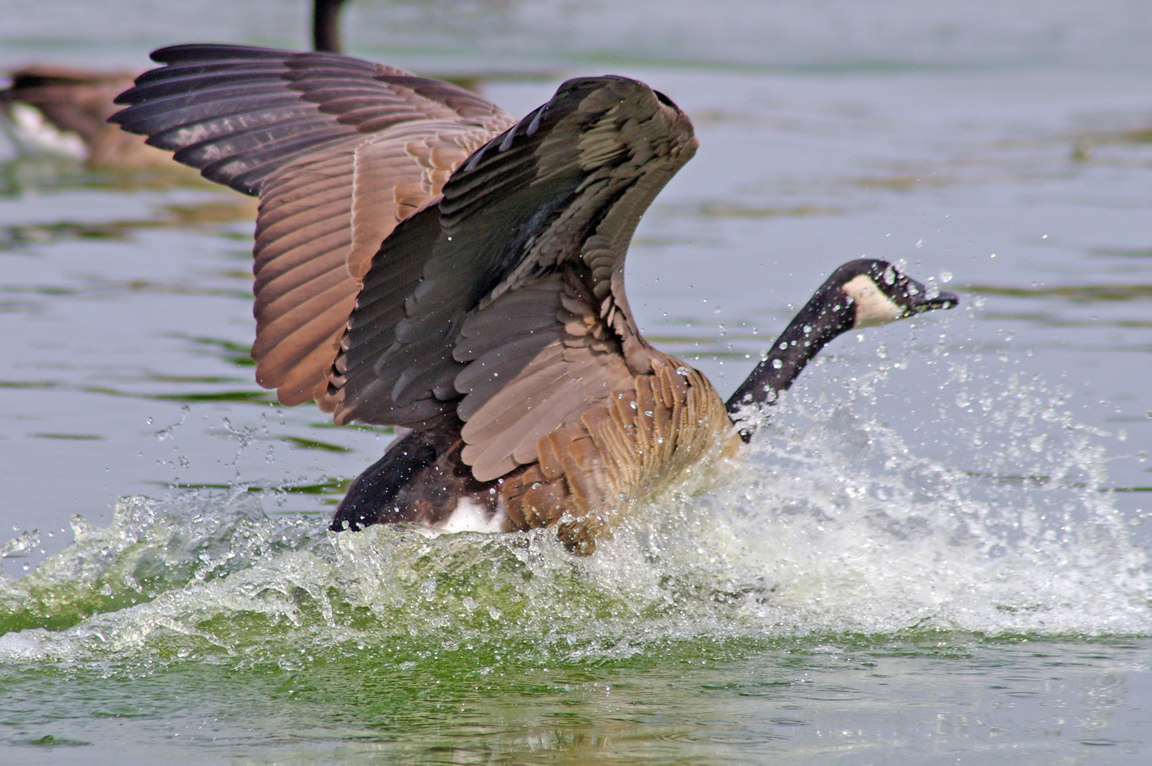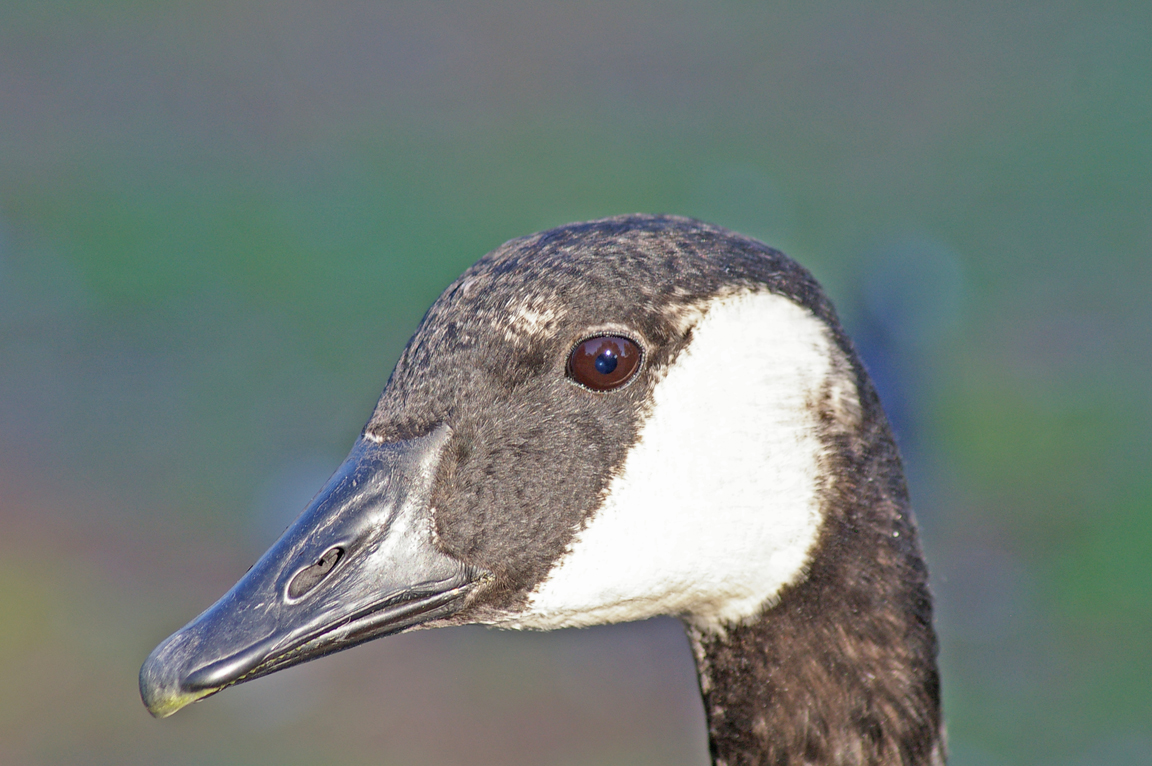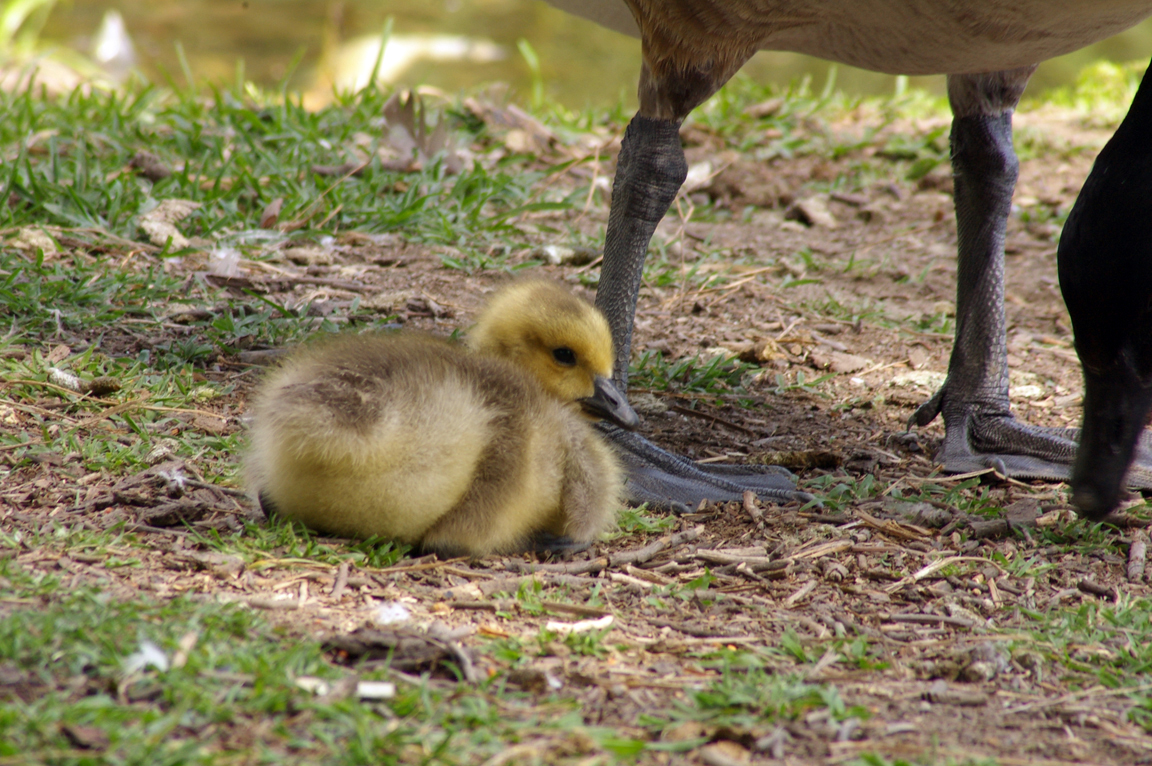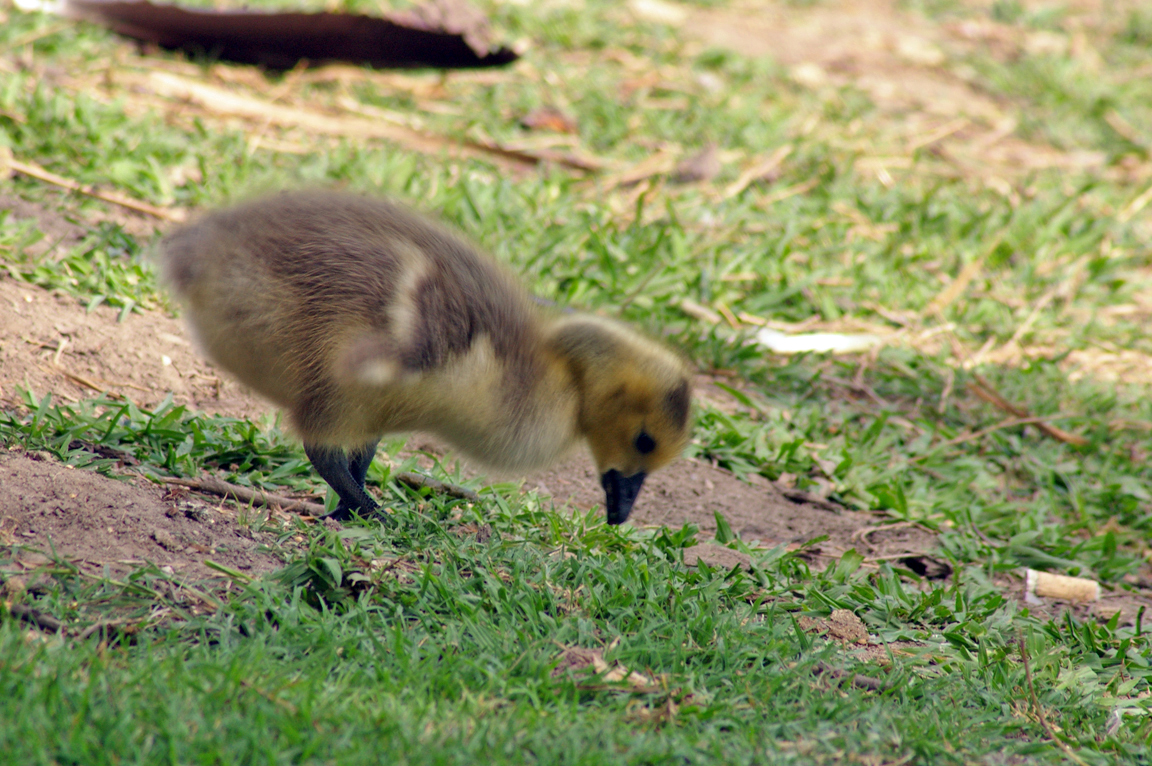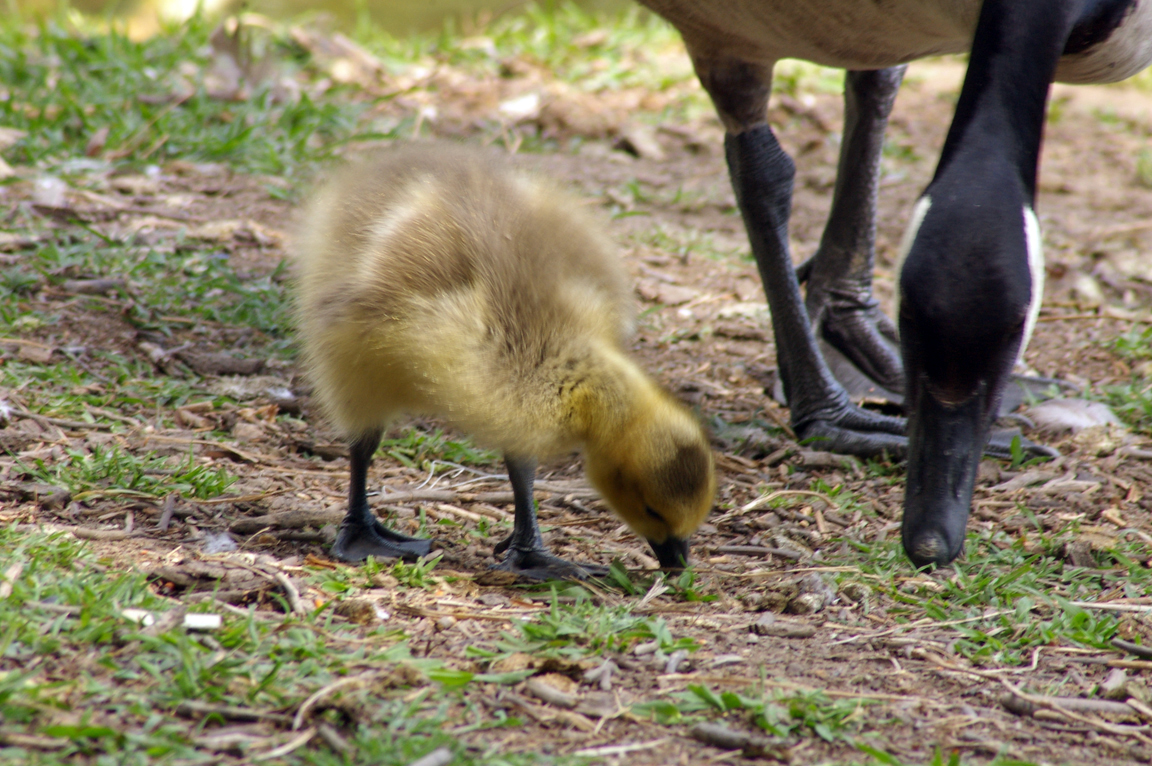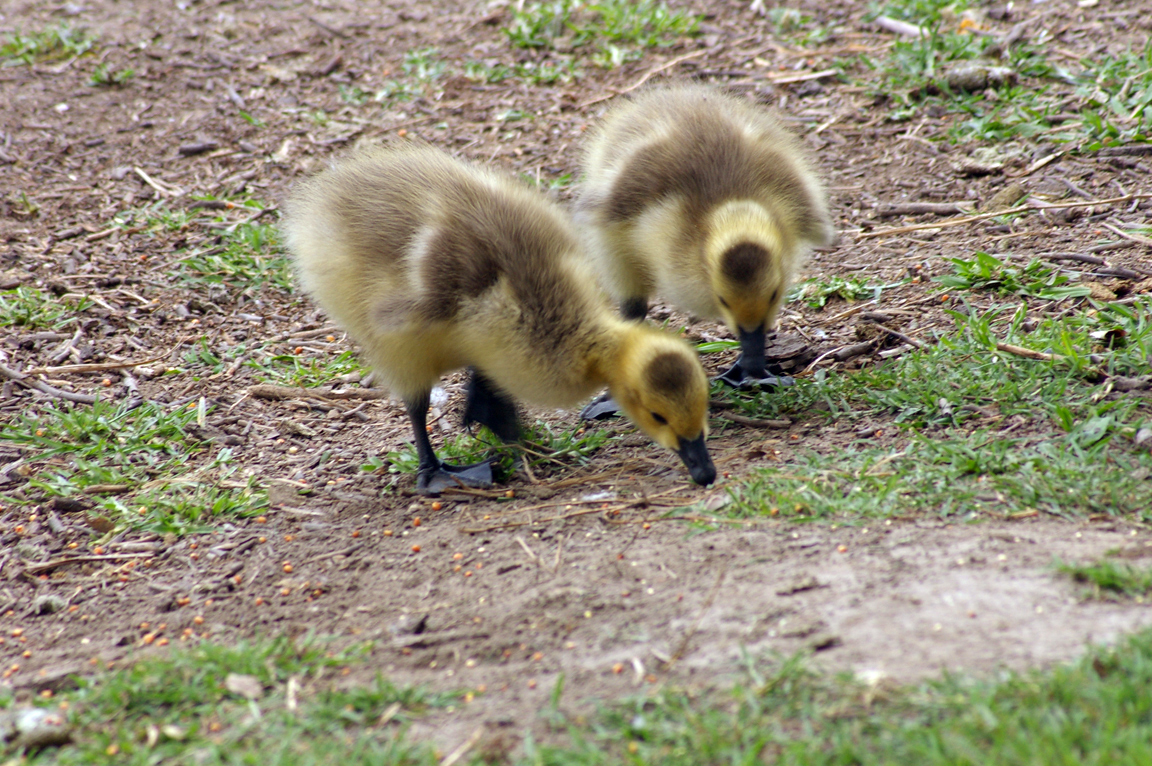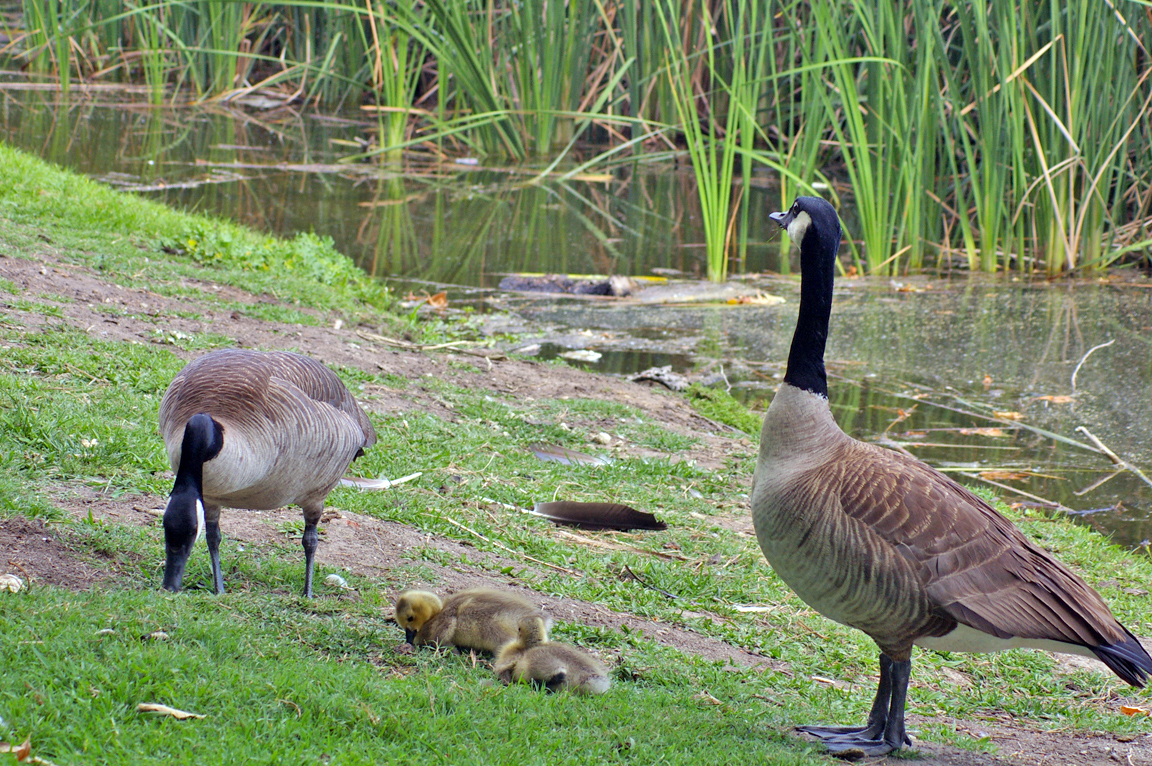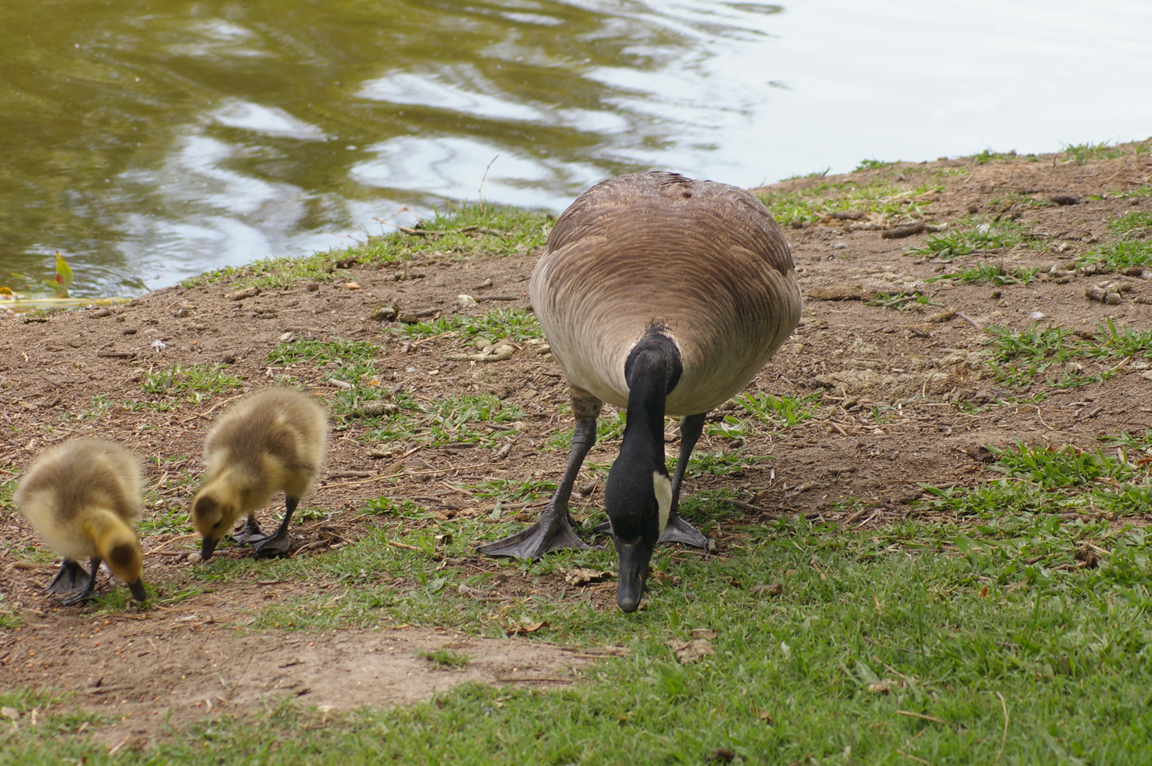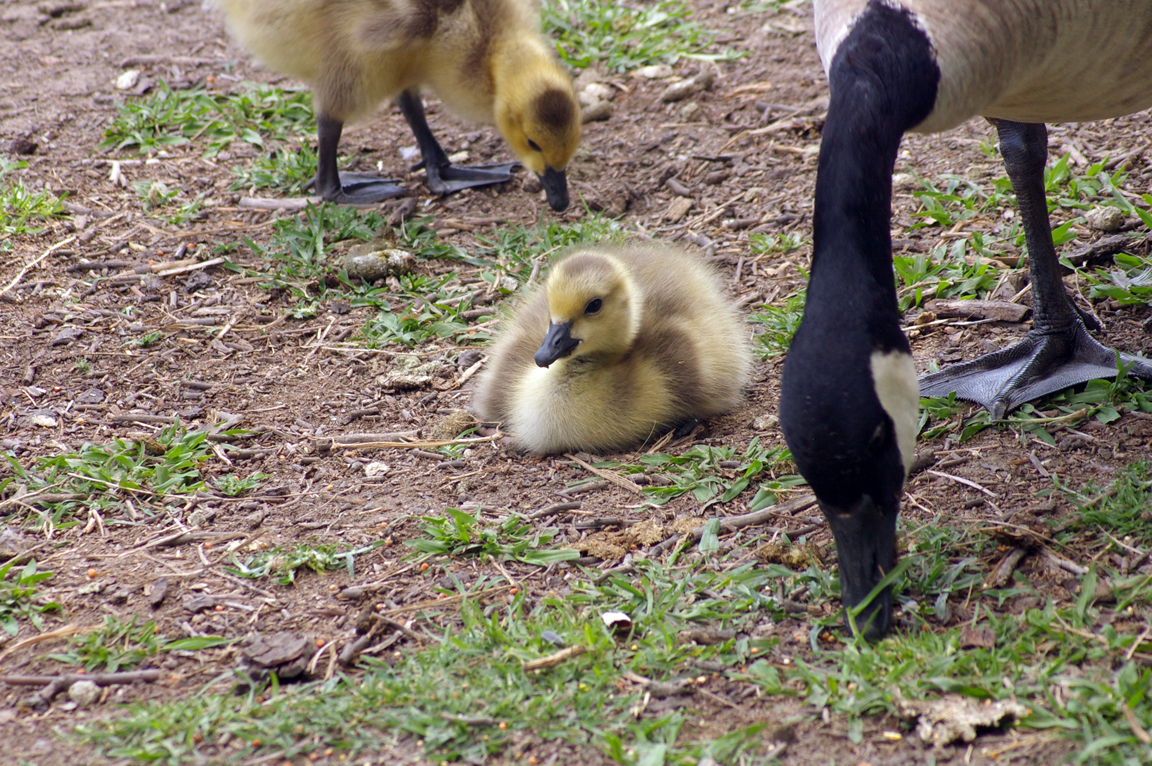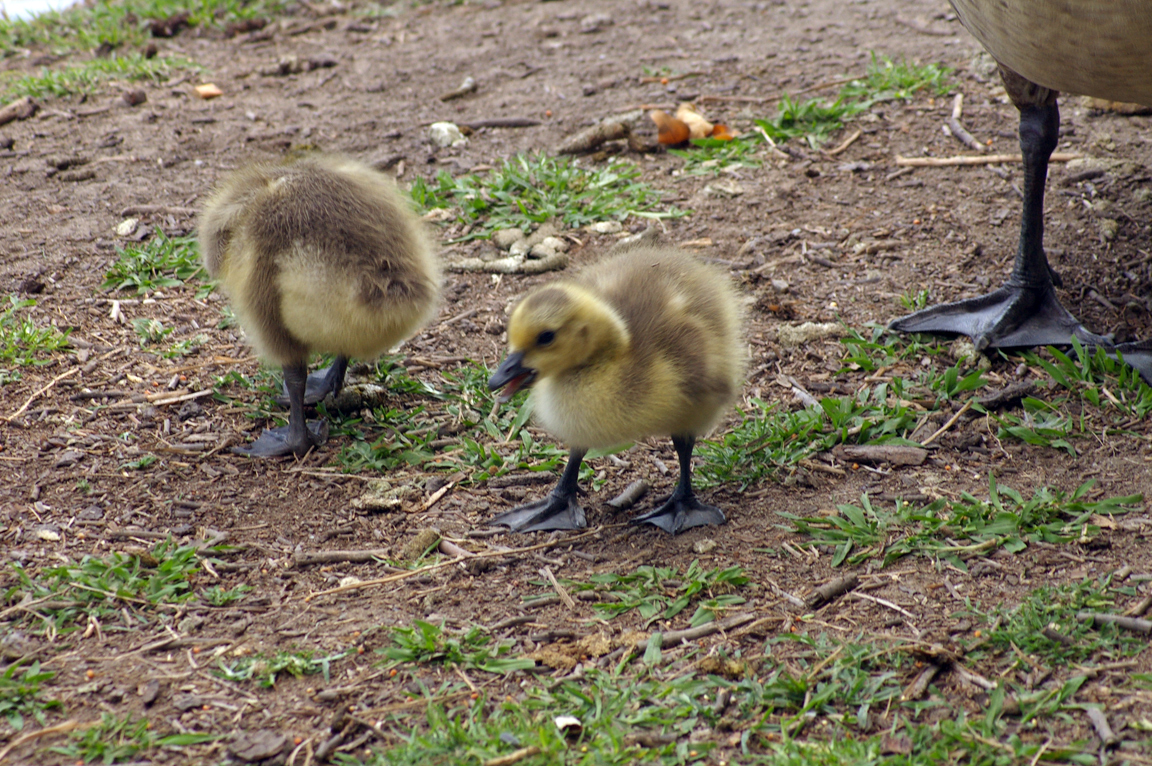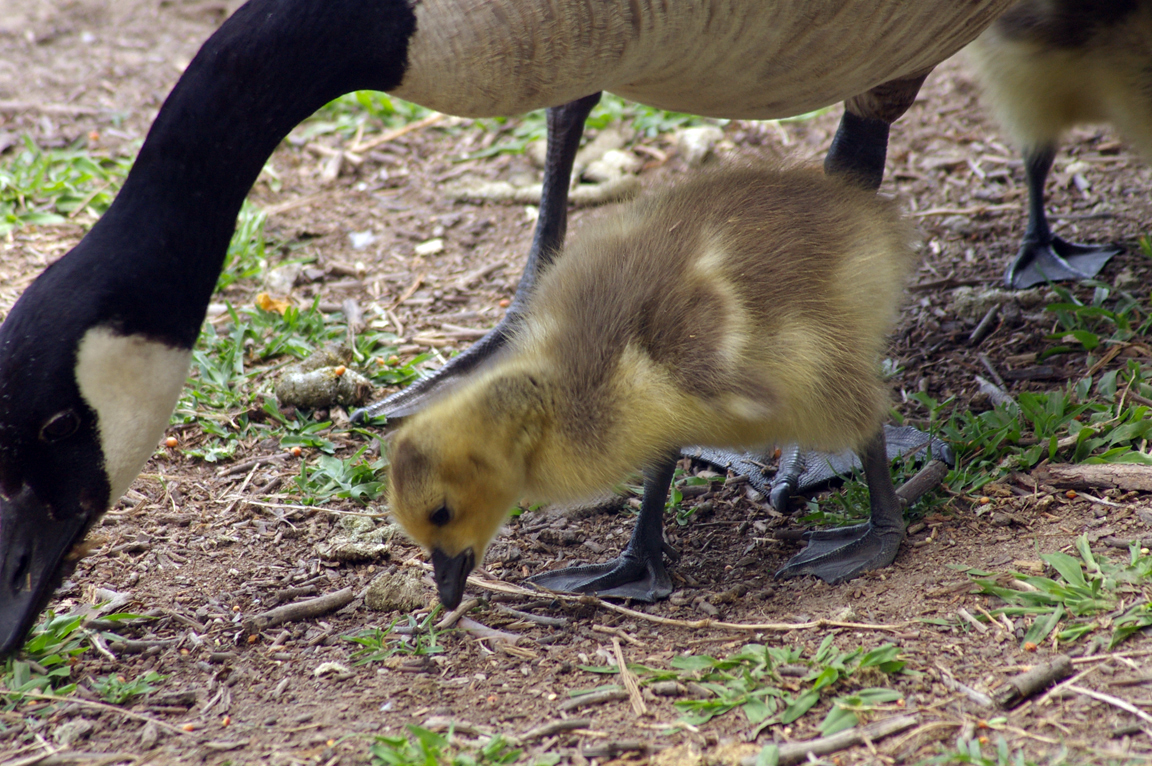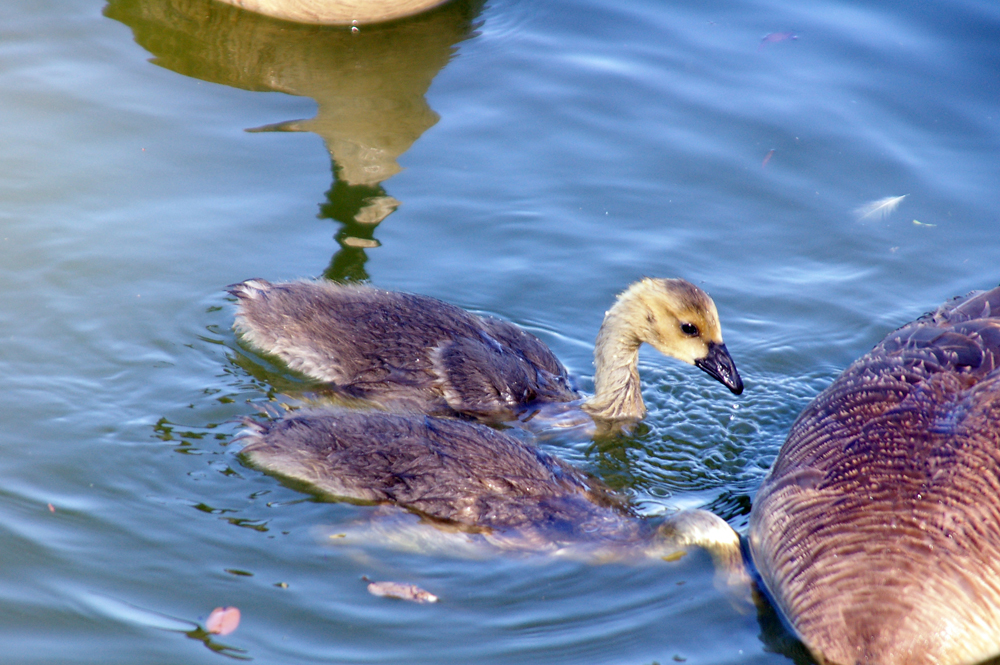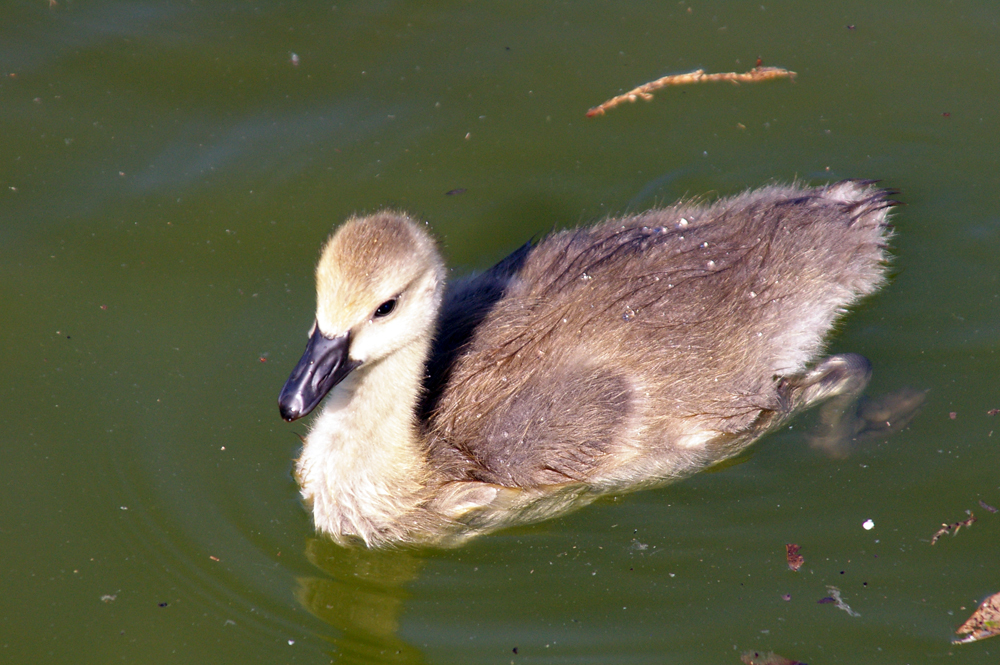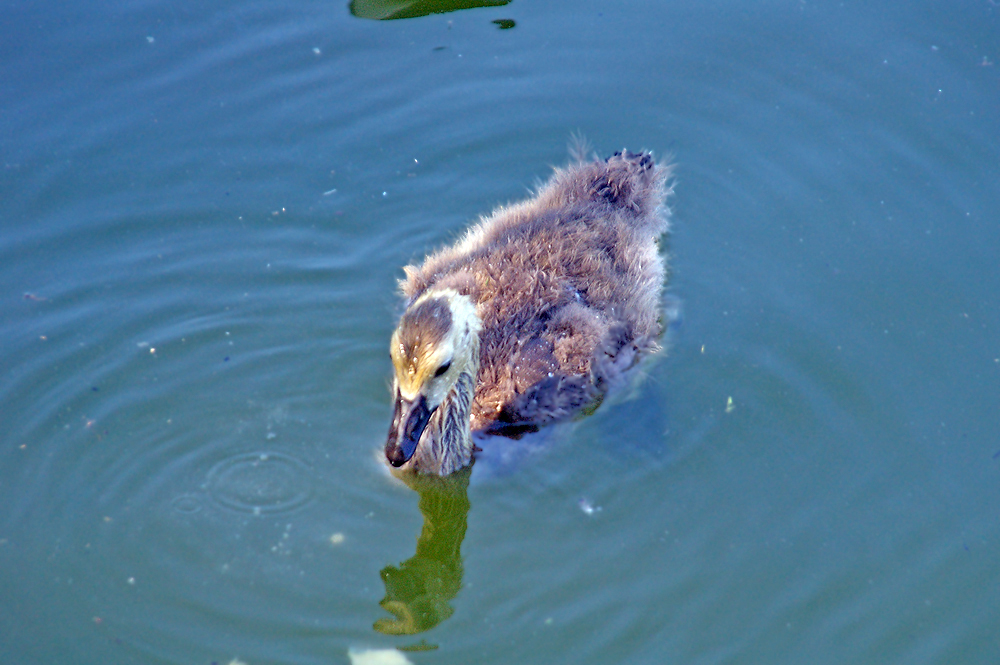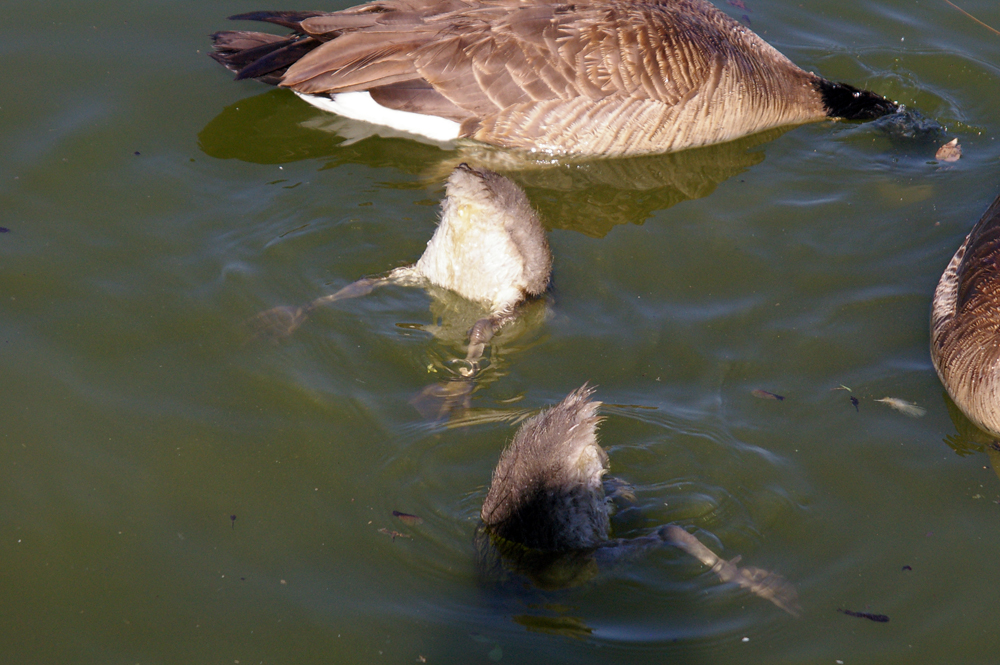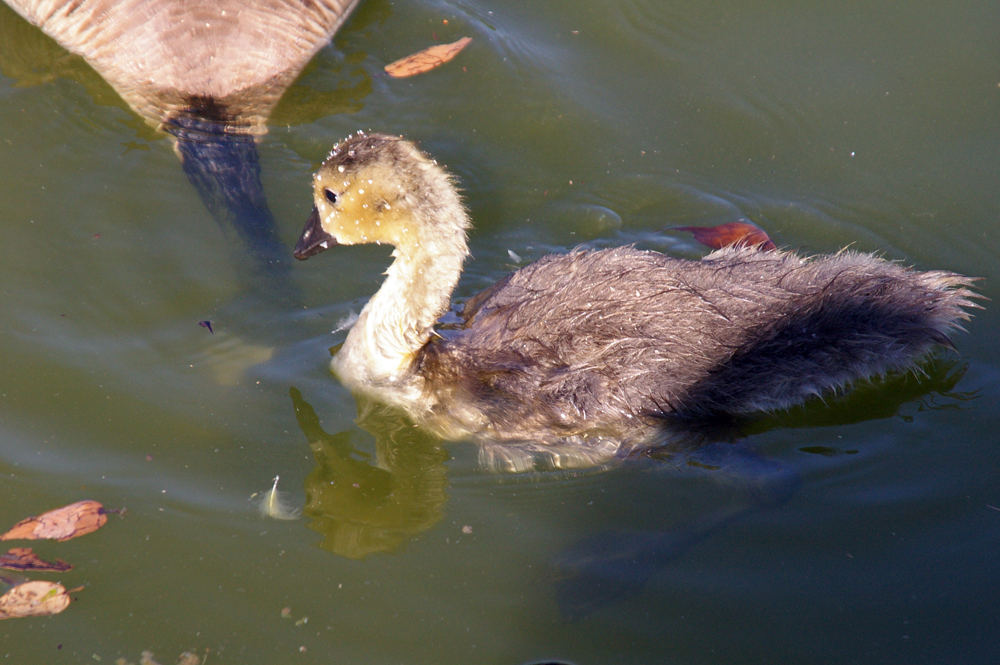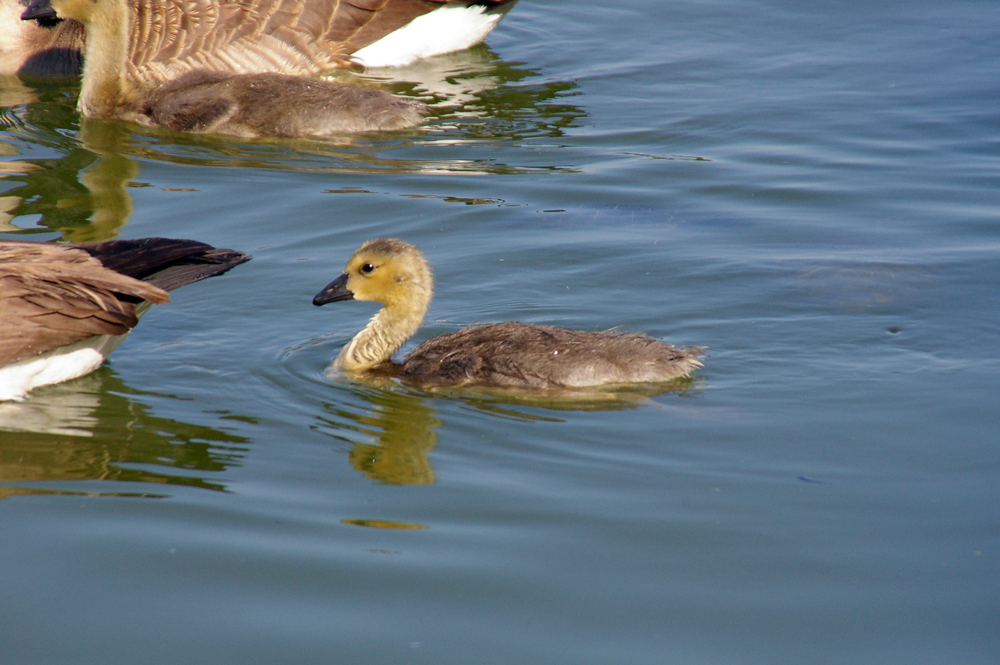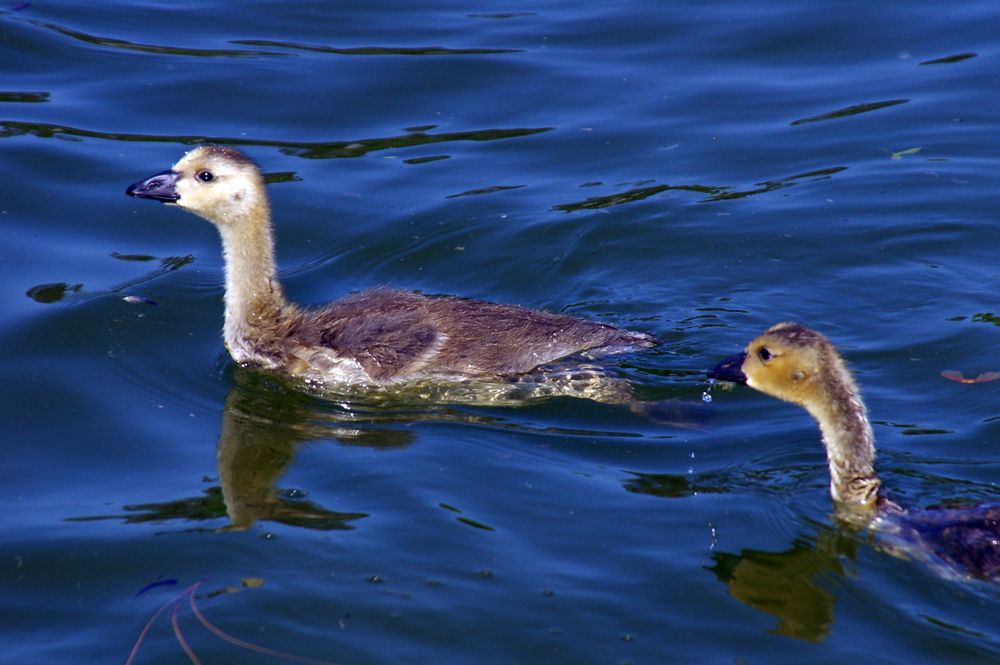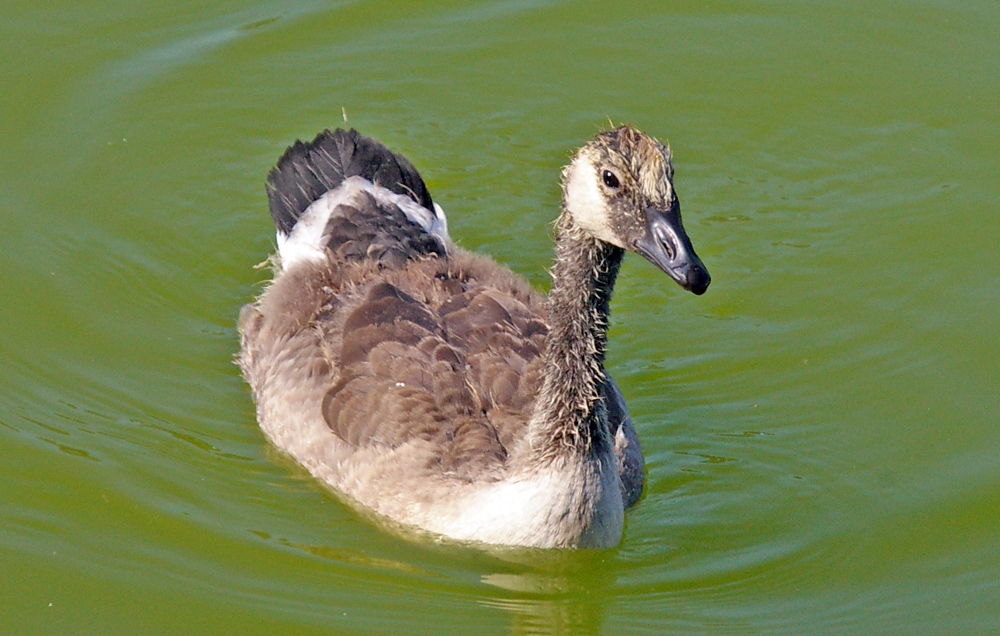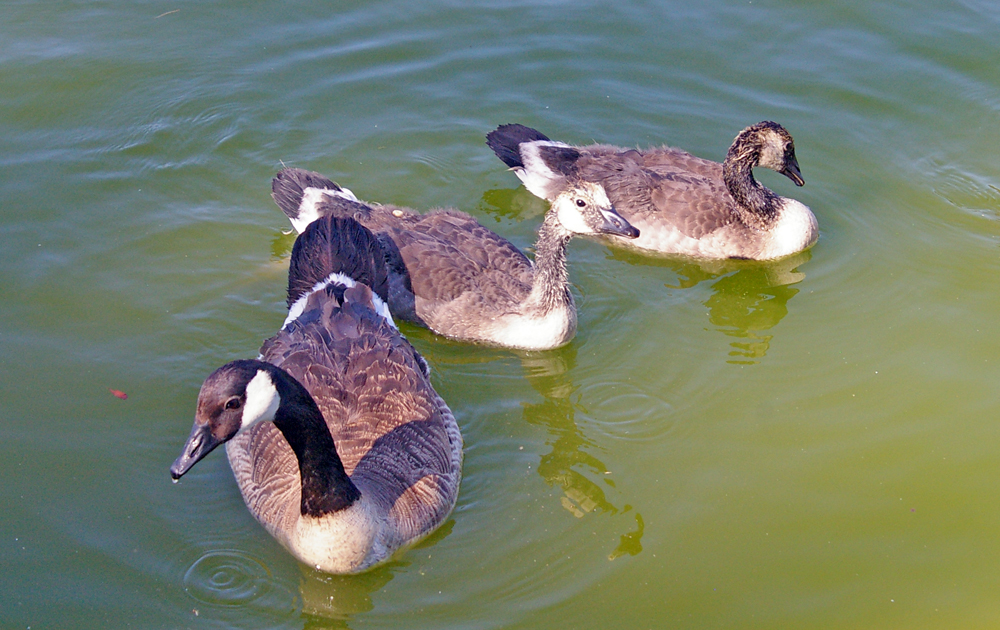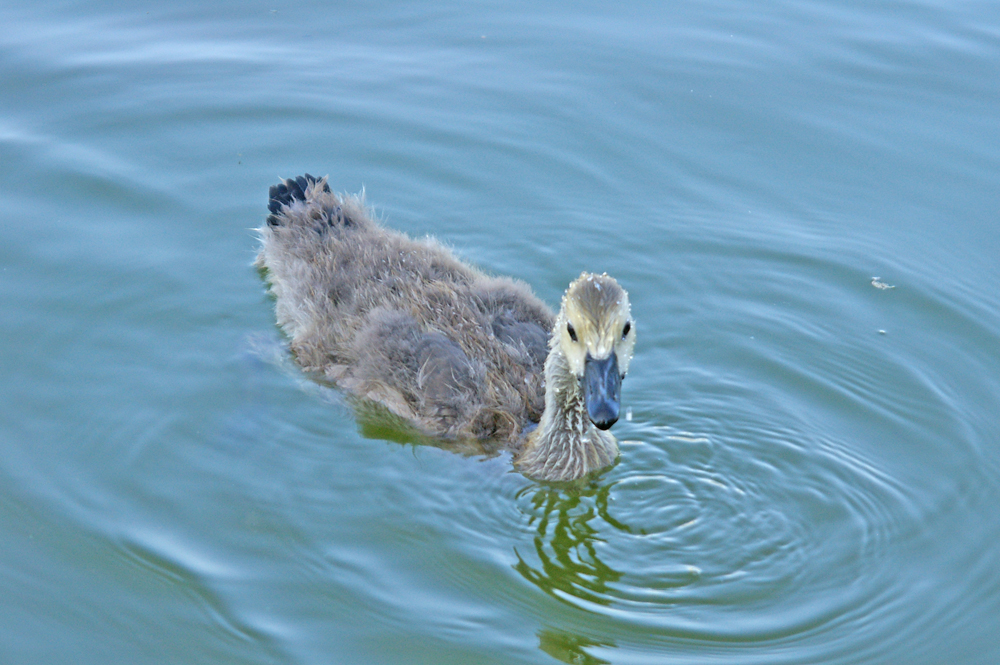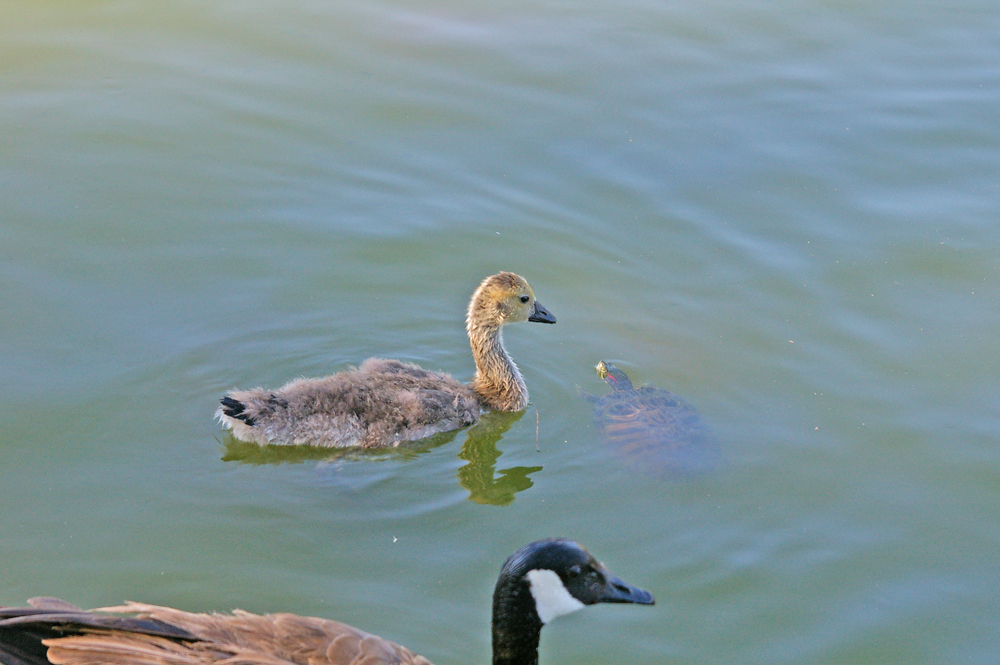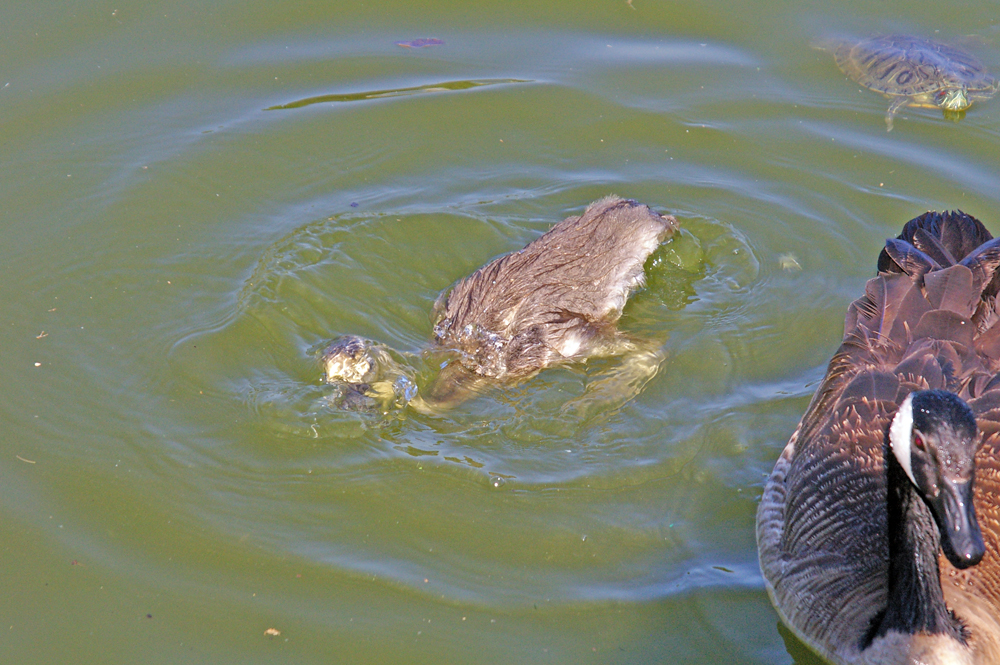|
|
|
 |
Canada Goose
|
| Branta canadensis | |
The most familiar and widespread goose in North America, the Canada Goose can be found in all kinds of water all across the continent, from the tundra to the Gulf Coast. Some populations have become resident in urban areas, and are now coming into conflict with people.
Interesting Information
-
At least 11 subspecies of Canada Goose have been recognized, although only a couple are distinctive. In general, the geese get smaller as you move northward, and darker as you go westward. The four smallest forms are now considered a different species: the Cackling Goose.
-
Some migratory populations of the Canada Goose are not going as far south in the winter as they used to. This northward range shift has been attributed to changes in farm practices that makes waste grain more available in fall and winter, as well as changes in hunting pressure and changes in weather.
-
Individual Canada Geese from most populations make annual northward migrations after breeding. Nonbreeding geese, or those that lost nests early in the breeding season, may move anywhere from several kilometers to more than 1500 km northward. There they take advantage of vegetation in an earlier state of growth to fuel their molt. Even members of "resident" populations, which do not migrate southward in winter, will move north in late summer to molt.
-
The giant Canada goose subspecies, B. canadensis maxima, formerly bred from central Manitoba to Kentucky. It was nearly driven extinct in the early 1900s. Programs to reestablish the subspecies to it original range were tremendously successful, and in fact, in some places were too successful. The numerous introductions and translocations created a number of resident populations, and the geese have become a nuisance in many urban and suburban areas.
Description
Adult Description
-
76-110 cm (30-43 in)
-
Wingspan: 127-170 cm (50-67 in)
-
Weight: 3000-9000 g (105.9-317.7 ounces)
-
Large waterbird.
-
Black head.
-
Long, black neck.
-
White chinstrap.
-
Light tan to cream breast feathers.
-
Brownish back.
-
White undertail.
-
Rump white.
-
Tail black.
-
Legs black.
-
Eyes black.
-
Bill black.
-
White cheek patches may or may not be separated by black stripe on chin.
-
Black neck sometimes separated from brown chest by white collar.
Sex Differences
Sexes similar.
Immature
Juvenile similar to adult.
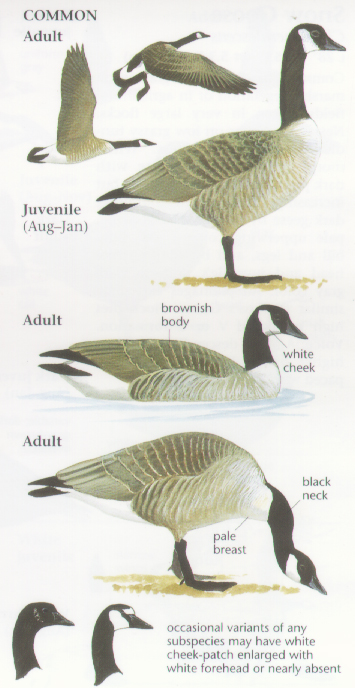
Photo taken from: The Sibley Field Guide by David Allen Sibley
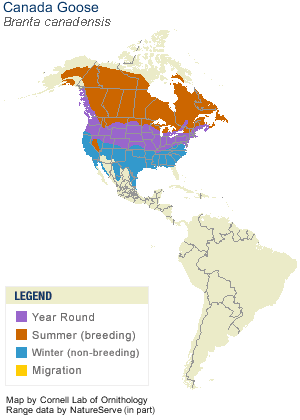
© 2003 Cornell Lab of Ornithology
|
Habitat |
|
Breeds in a broad range of habitats from low Arctic tundra to prairies and parklands, including lakes, meadows, golf courses, and city parks. |
|
Behavior |
|
Grazes on grass, tips up to reach aquatic vegetation. Feeds in flocks in fields |
|
Food |
|
Entirely herbivorous. Eats variety of plant species and parts, especially grasses, sedges, grain, and berries. |
Taxonomy
| Kingdom: | Animalia |
| Phylum: | Chordata |
| Subphylum: | Vertebrata |
| Class: | Aves |
| Order: | Anseriformes |
| Family: | Anatidae |
| Subfamily: | Anserinae |
| Genus: | Branta |
| Species: | Branta canadensis |
| Subspecies: | Branta canadensis canadensis |
| Branta canadensis fulva | |
| Branta canadensis interior | |
| Branta canadensis maxima | |
| Branta canadensis moffitti | |
| Branta canadensis occidentalis | |
| Branta canadensis parvipes |
Similar Species |
|
|
Bird Sound |
|
Call a loud "honk." |
|
Eggs look like this |
|
Photo taken from: ARCTOS Collaborative Collection Management Solution |
Videos
Canada Goose 1
Competing with the Rock Pigeons for Bird Seed
Canada Goose 2
Up close and personal
Canada Goose 3
Canada Goose on her nest - Don't tell her she isn't well hidden
